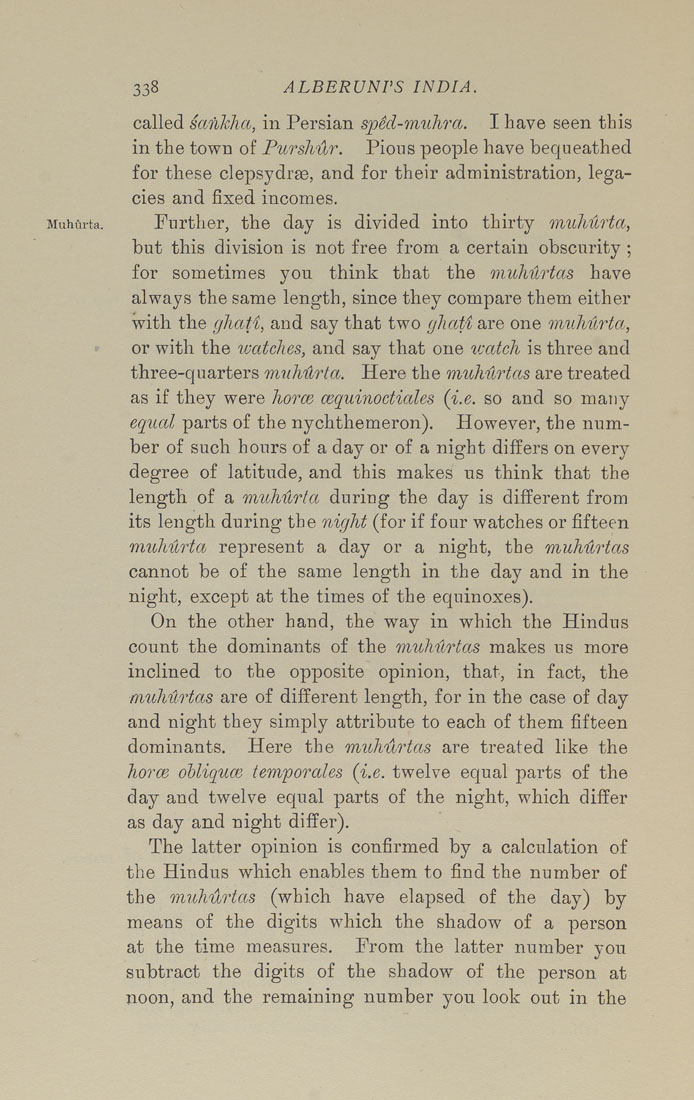Bīrūnī, Muḥammad ibn Aḥmad, Alberuni's India (v. 1)
(London : Kegan Paul, Trench, Trübner & Co., 1910.)
|
||
|
|
|
|
| Page 338 |

338 ALBERUNPS INDIA. called sankha, in Persian sped-muhra. I have seen this in the town of PurshiXr. Pious people have bequeathed for these clepsydree, and for their administration, lega¬ cies and fixed incomes. Muhurta. Furtlicr, the day is divided into thirty muhurta, but this division is not free from a certain obscurity ; for sometimes you think that the muhitrtas have always the same length, since they compare them either with the ghati, and say that two cghati are one muhurta, " or with the watches, and say that one watch is three and three-quarters muhHrta. Here the muhurtas are treated as if they were horce cequinoctiales (i.e. so and so many equctl parts of the nychthemeron). However, the num¬ ber of such hours of a day or of a night differs on every degree of latitude, and this makes us think that the length of a muhurta during the day is different from its length during the night (for if four watches or fifteen muhurta represent a day or a night, the muhilrtas cannot be of the same length in the day and in the night, except at the times of the equinoxes). On the other hand, the way in which the Hindus count the dominants of the muhilrtas makes us more inclined to the opposite opinion, that, in fact, the muhurtas are of different length, for in the case of day and night they simply attribute to each of them fifteen dominants. Here the muhilrtas are treated like the horce obliquce tenvporales (i.e. twelve equal parts of the day and twelve equal parts of the night, which differ as day and night differ). The latter opinion is confirmed by a calculation of the Hindus which enables them to find the number of the muhurtas (which have elapsed of the day) by means of the digits which the shadow of a person at the time measures. From the latter number you subtract the digits of the shadow of the person at noon, and the remaining number you look out in the |
| Page 338 |







